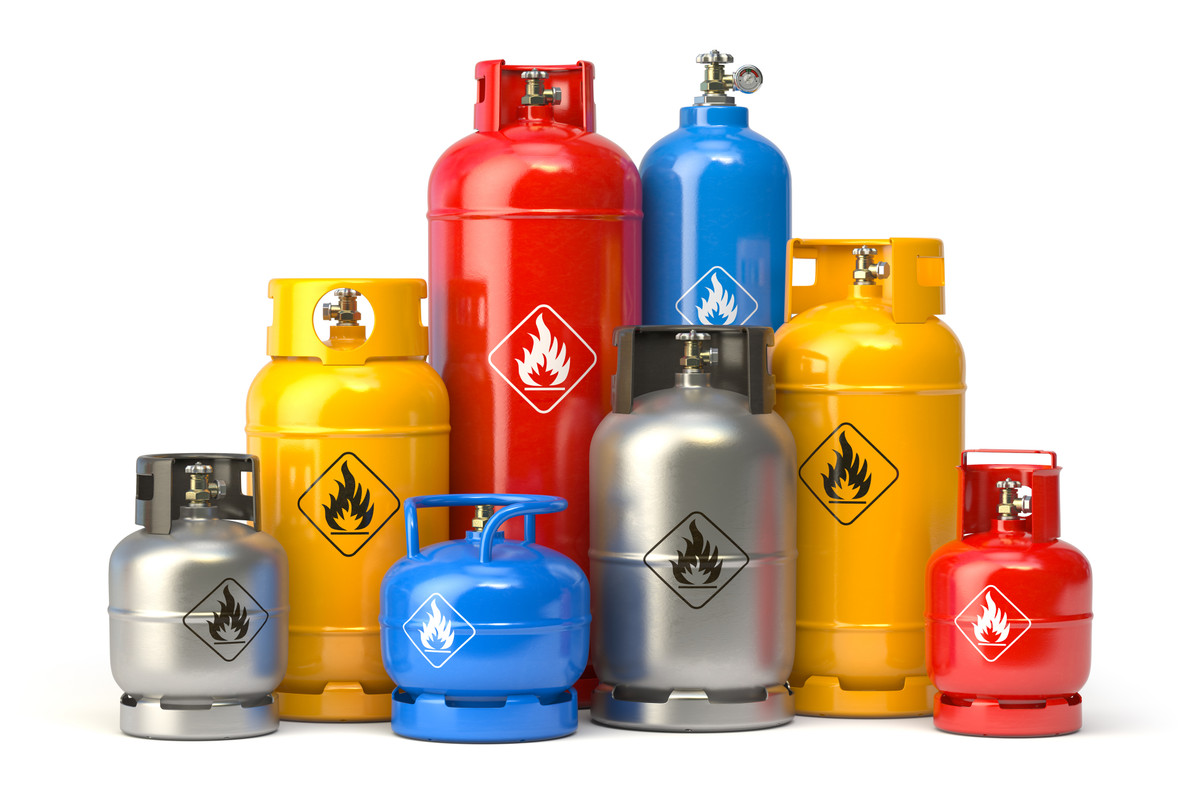Safe Gas Cylinder Storage and Handling Tips
Improper handling and storage of gas cylinders can result in serious injury or death. Cylinders can have an internal pressure of up to 2500 pounds per square inch, and it must be ensured that they are stored and handled in a way that prevents dropping, tipping or catching fire. CP Lab Safety has everything you need to meet regulations and prevent such disasters. For more information on OSHA requirements for gas cylinder handling, visit OSHA Compressed Gases General Requirements
Cylinders should be secured upright with a chain or strap in a proper rack or locker.
Cylinders should be stored at least 20 feet away from flammable materials and in a dry, ventilated place.
Oxygen cylinders should be kept at least 20 feet from fuel gas cylinders.
Valves should be completely closed and protection devices should be secured.
Appropriate warning signs should be used where cylinders are stored.
Cylinders should be kept away from areas where there is any vehicle traffic, excessive heat or electrical circuits.
Empty and full cylinders should be stored separately.
Transporting Tips
Most injuries associated with gas cylinders happen during transportation. Proper handling when cylinders must be transported prevents many serious accidents.
Avoid dropping the cylinders or hitting them against anything.
Use the proper personal protection such as safety glasses and gloves.
Proper safety measures like caps and guards must be securely installed.
Use a specialized cart or hand truck to move the cylinders.
Use proper pallets if using a forklift.
Do not lift cylinders by their caps or guards, or with slings.
Training Tips
Employers must make employees aware of the dangers of the chemical hazards of compressed gas cylinders via a hazard communication program, labels and signage. Cylinders should only be handled by properly trained employees.
Ensure the gas cylinders are labeled clearly and identifiable. Do not allow workers to use a container if they can’t read the label.
Close cylinder valves when not in use. Keep valves pointed away from any persons while opening.
Do not tamper with cylinder valves or safety relief devices.
Recent Posts
-
Disinfecting Surfaces in the Era of Covid and EPA Registered Commercial Disinfectants and Viricides
The disinfection of surfaces at home, in public spaces, and in hospitals and clinics needs to be a …15th Jan 2023 -
Working with Inorganic Acids in the Laboratory: A Practical Guide
Working with Inorganic Acids in the Laboratory Acids are of great importance in the laboratory and a …5th Jan 2023 -
The Top 12 Drinking Water Contaminants
1.Lead- from older plumbing systems pre-1986, when lead pipes, solder, and components were banned. …14th Dec 2022

